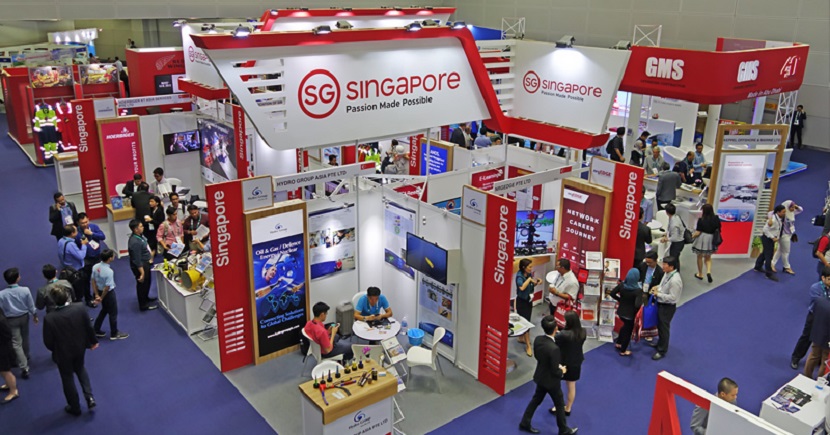
1. Understanding what’s in it for you
Tradeshows are one of the most effective platforms to market your products and services. According to Mr Prakash Ramajillu, Division Director at Koelnmesse Pte Ltd, tradeshows are the second most important in B2B communications. This is due to the face-to-face interaction it offers, which allows businesses to build rapport and trust with potential clients.
At tradeshows, you can get a better understanding of the solutions offered by competitors in the market, and see how you can better position your company and business offerings at future events.
The Cost Effectiveness of Exhibition Participation (2009) report by the Centre for Exhibition Industry Research revealed that:
- 99% of exhibitors found that B2B exhibitions deliver unique value that cannot be derived from other marketing channels.
- Exhibition goers attends the event with a purpose, which makes it easier for exhibitors to sell their products/services based on the common theme. With this, it narrows the audience pool and saves exhibitors S$1290/person when prospecting at an exhibition versus prospecting in the open field.
2. Plan for success
To maximise your tradeshow experience, you will need to plan ahead. First, define your objectives. These can be quantitative goals such as a cash value in sales targets, or qualitative goals, like networking or learning something about the market. Do not forget to account for the cost of participation, 50% of which will go to the booth rental, manpower, accommodations, as well as tax and permit issues for freight. The remainder would usually cover travel, entertainment, advertising, security and cleaning.
3. Stand out from the competition
Ms Illka Gobius, Managing Director of PINPOINT PR, shared tips on how to leverage the marketing opportunities presented by tradeshows.
Most commonly, tradeshow participants can ride on the following tools or engage a PR practitioner to increase the level of awareness for their business at the tradeshow:
- Media kits and releases
- Interview opportunities
- Inclusion of business details in the organiser’s eDMs and newsletters
- Flyers, banners and posters
Participants can also be creative in requesting for other PR and marketing opportunities, such as requesting for their logos to be printed on serviettes and goodie bags etc.
Ms Gobius also mentioned that in PR, success is measured by two indicators: did the target audience get the key message, and what is the advertising value generated. This is where the media is especially useful. Not only are editorial features a form of authentic communication, they also help businesses save on advertising costs, while generating a good return on investment through word of mouth referrals.
Exhibitors should prepare a comprehensive media kit and make it available at the booth. Journalists will be curious about participants and will request for media kits.
A good media kit should contain:
- Media releases
- Announcements
- Spokesperson biographies
- Fact sheets
- Speeches
- Brochures
However, the media is looking out for novelty and news. Companies need to foster relations with journalists or engage the organiser’s PR team to arrange for media coverage.

